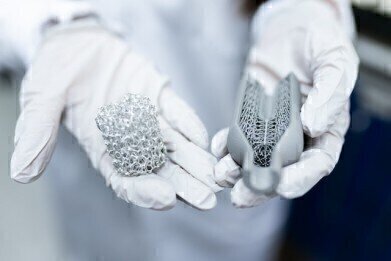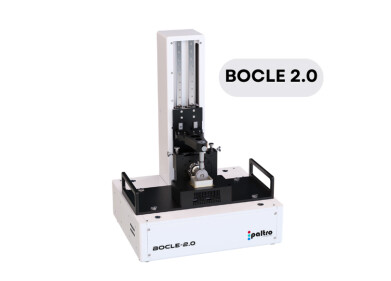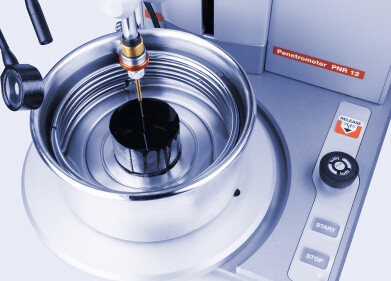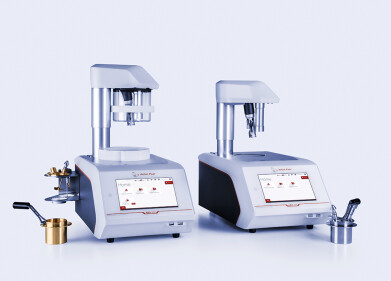Measurement and testing
Lithium Ion Batteries: Types, Testing & Uses
Sep 15 2022
From smartphones and laptops to electric bicycles and cars, lithium ion batteries have reimagined how we generate power. As the energy landscape shifts towards cleaner and greener alternatives, lithium ion batteries have emerged as an exciting technology.
The industry is booming, with research and product development teams continually making breakthroughs. Read on to find out more about lithium ion batteries and how they’re revolutionising a myriad of industries.
The anatomy of a lithium ion battery
First, let’s take a closer look at how the technology works. Lithium ion batteries feature six major components:
- Anode
- Cathode
- Separator
- Electrolyte
- Positive current collector
- Negative current collector
All work together to power the battery and deliver energy to the source. So, how does it all work? Find out more below.
How lithium ion batteries work
All lithium ion batteries feature two electrodes - an anode and a cathode. These store the lithium ions. A separator between the two electrodes prevents the anode and cathode from touching each other. The separator also helps transport ions within the cell.
When designing lithium ion battery separators, it’s important to find the right balance of mechanical durability and porosity. This ensures the separator can effectively prevent physical contact between the two electrodes, without hindering the movement of lithium ions. Separating the anode and cathode is vital, as physical contact between the two is what usually causes the battery to short circuit and overheat. This can not only destroy the battery but trigger issues like self-combustion.
The role of the electrolyte
Any remaining space in the battery is occupied by an electrolyte. This is usually made up of lithium salt dissolved in a blend of organic solvents. The electrolyte helps lithium ions transition between the anode and cathode. This helps improve power, accelerate recharge time and extend the overall lifespan of the lithium ion battery.
As positively charged lithium ions travel between the anode and cathode, they pass through the separator and create free electrons. These free electrons form in the anode and charge the positive current collector. This positive charge creates an electrical current that’s used to power the device. As energy is consumed, ions travel to the negative current collector. When the device is plugged in, the cathode releases lithium ions. They pass through the separator, travel to the anode and generate free electrons along the way. This is what recharges the battery and generates more power.
The benefits of lithium ion batteries
-
Rechargeable
Lithium ion batteries are rechargeable and can be used over and over again. This makes them a cost-effective and eco-friendly alternative to single-use batteries.
-
Lightweight
The compact and lightweight characteristics of lithium ion batteries make them ideal for use in handheld devices. Lithium ion batteries can also be scaled up and used to power vehicles.
-
High energy per unit mass
Compared to other battery types, lithium ion batteries offer excellent energy per unit mass.
Energy and power
When assessing the quality, performance and suitability of batteries, energy and power density are two of the most important properties
Understanding energy density
Energy density describes the amount of energy a battery can store, relative to its mass. The figure is measured in watt-hours per kilogram (Wh/kg).
Understanding power density
Power density measures how much power a battery can generate, relative to its mass. It’s measured in watts per kilogram (W/kg).
Testing lithium ion batteries
Like most tech industries, the lithium ion battery sector is heavily regulated. The recent surge in popularity has prompted an uptake in the rules and regulations surrounding lithium batteries. Testing helps address the following issues associated with lithium ion batteries and ensure products are safe and perform as advertised.
Issues associated with lithium ion batteries
- Self-discharge
- Loss of energy and power density
- Safety issues
- Self-combustion
Testing individual battery components
From the charge of electrode materials to the porosity of separators, testing has a critical role to play when designing and developing lithium ion batteries. A variety of analytical techniques are used to test the individual components of lithium ion batteries. Results help product developers improve the energy density and power density of lithium ion batteries.
For example, in a recent study published in the journal ACS Applied Energy Materials, the authors explore how fluorinated solvents can be used to enhance lithium ion battery electrolyte solutions and revolutionise performance. “The extraordinary electrochemical stability of this electrolyte solution makes it a suitable candidate for other high-voltage cathode materials,” write the team.
Testing methods are also an important part of protecting consumers and ensuring lithium ion batteries meet health and safety requirements. They’re also integral to quality control and assurance testing.
Below, we take a closer look at some of the innovative methods and techniques used to test lithium ion battery components.
Fourier Transform Infrared (FT-IR) Spectroscopy
This advanced characterisation technique is used to develop high-performance lithium batteries. It offers engineers molecular-level data about the chemical bonds present in lithium ion batteries and their functional groups. FT-IR analysis and imaging is especially useful for characterising oxidative degradation, which has a big impact on the performance and lifespan of lithium ion batteries. Spectrometers are used to analyse the surfaces of binder and separator materials when the battery is releasing power and being recharged.
America-based scientific company PerkinElmer is a global leader in FT-IR technology. The next-generation PerkinElmer Frontier™ spectrometer range offers an advanced suite of features designed to help engineers develop state-of-the-art lithium ion batteries. Add-on technologies like the Spotlight™ 400 FT-IR infrared imaging system with Attenuated Total Reflectance (ATR) capabilities can be used to unlock ultra-high-resolution visuals. This allows scientists to use FT-IR spectral data to visualise the composition of lithium ion materials and develop batteries that offer exceptional performance.
Gas Chromatography Mass Spectrometry (GC/MS)
This analytical technique is particularly useful for compositional testing, which offers scientists in-depth information about the physical characteristics of lithium ion batteries. Detecting and quantifying carbonates in electrolytic solutions is important, as they can have a big impact on the performance of the battery and its total lifespan. GC/MS is also used to analyse other properties, such as the different gasses produced by lithium ion batteries. This helps scientists understand more about how and why lithium ion batteries degrade.
When it comes to precision, the PerkinElmer Clarus® SQ 8 GC/MS is a top performer. The system also offers best-in-class recovery and linearity, which allows scientists to unlock ultra-trace detection limits. The ability to determine the composition of cyclic carbonates such as propylene carbonate, ethyl methyl carbonate, ethylene carbonate and diethyl carbonate helps product developers improve energy density. This type of compositional data is also used to extend the cycle life of lithium ion batteries and improve safety credentials.
“Systems like the Clarus SQ 8 and its Clarifi™ detector provides the flexibility to choose ideal levels of sensitivity and dynamic range, and eliminates background noise while maximizing analyte signals,” reads a lithium ion battery analysis guide published by PerkinElmer. “The Clarus SQ 8 GC/MS combined with the market-leading TurboMatrix™ sample handling system, user-friendly software, and world-class service from PerkinElmer, form an integrated, complete analytical solution for lithium-ion battery testing.”
Inductively coupled plasma optical emission spectroscopy (ICP-OES)
From smartphone manufacturers to EV engineers, ICP-OES is widely used across the lithium ion battery industry. Sensitivity and resolution should be front of mind when choosing an ICP-OES system. ICP-OES spectrometers are especially useful for calculating the exact ratios of lithium ion battery components. This includes the anode and cathode, as well as additives and impurities in the electrolyte. High sensitivity is critical, as even small additive imbalances or traces of impurities can affect the performance of lithium ion batteries.
Thermal analysis
Safety is just as important as performance when designing and manufacturing lithium batteries. Over the past decade, industry standards and regulations have tightened drastically, particularly for batteries used to power handheld electronic devices and electric cars.
Thermogravimetric Analysis (TGA) has emerged as a useful tool to assess the thermal stability of lithium ion batteries. The technique is also used to analyse how lithium ion battery materials decompose when exposed to heat.
Of all the thermoanalytical techniques used by lithium ion battery scientists, Differential Scanning Calorimetry (DSC) is one of the most useful. Calorimeters are used to analyse the melting profiles of separators, as well as explore how electrolytes decompose under high temperatures. Technologies like DSC have contributed to the development of innovative solutions like composite polymer electrolytes (CPE). This calibre of electrolyte offers excellent thermal stability, as well as great performance and power delivery. Unlike conventional lithium ion battery electrolytes, CPEs overcome safety concerns such as leakage and self-combustion.
Lithium ion batteries and decarbonisation
Lithium ion batteries will play a central role in plans to decarbonise global economies, combat climate change and help the UN achieve its Sustainable Development Goals. Alongside lithium ion batteries, combustion control solutions will emerge as an efficient way to slash industrial emissions. Gas analysis has an important role to play when it comes to developing decarbonisation strategies and meeting carbon reduction targets. Find out more about the movement in ‘The role of combustion in decarbonisation strategies’.
Digital Edition
PIN 25.6 Buyers' Guide
January 2025
Buyers' Guide Directory - Product Listings by Category - Suppliers Listings (A-Z) Articles Analytical Instrumentation - ASTM D7042: The Quantum Leap in Viscosity Testing Technology -...
View all digital editions
Events
Jan 25 2025 San Diego, CA, USA
SPE Hydraulic Fracturing Technology Conference and Exhibition
Feb 04 2025 The Woodlands, TX, USA
Feb 05 2025 Guangzhou, China
Trinidad and Tobago Energy Conference 2025
Feb 10 2025 Point Lisas, Trinidad
Feb 11 2025 Lagos, Nigeria



















